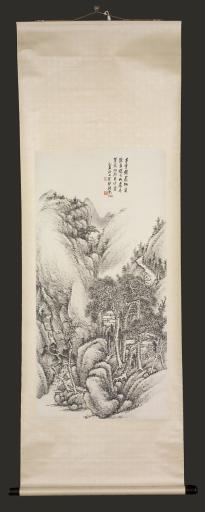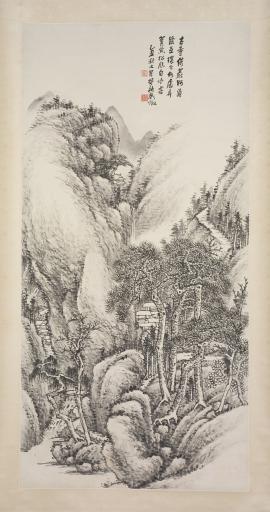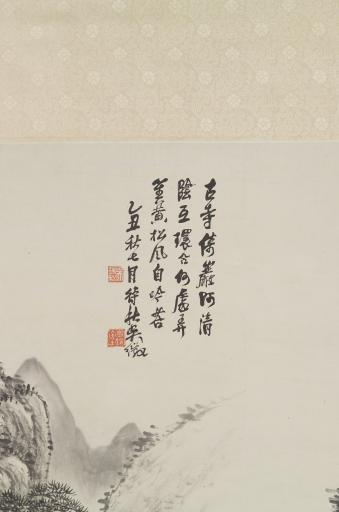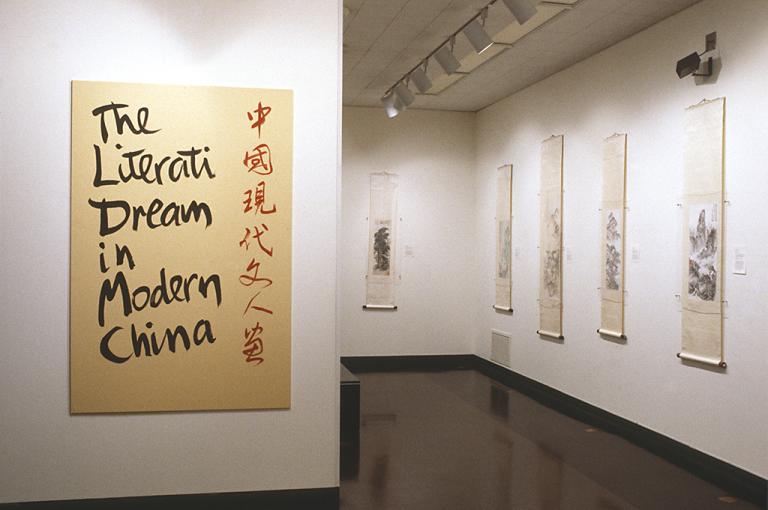Landscape after Kun Can, Wu Zheng
Artwork Overview
Wu Zheng, artist
1878–1949
Landscape after Kun Can,
1925, Republic of China (1911–1949)
Where object was made: China
Material/technique: ink; paper
Dimensions:
Image Dimensions Height/Width (Height x Width): 109.5 x 53.3 cm
Image Dimensions Height/Width (Height x Width): 43 1/8 x 21 in
Mount Dimensions (Height x Width x Depth): 188 x 66.3 cm
Mount Dimensions (Height x Width x Depth): 74 x 26 1/8 in
Image Dimensions Height/Width (Height x Width): 109.5 x 53.3 cm
Image Dimensions Height/Width (Height x Width): 43 1/8 x 21 in
Mount Dimensions (Height x Width x Depth): 188 x 66.3 cm
Mount Dimensions (Height x Width x Depth): 74 x 26 1/8 in
Credit line: Gift of Mr. and Mrs. Robert G. Braden
Accession number: 1983.0108
Not on display
If you wish to reproduce this image, please submit an image request






